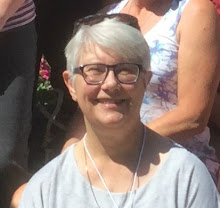Once again the 'arguments' about the 'best' way to thread continue. This person does A, that person does B, that other person swears by C, and round and round and round we go.
The best way to thread is what works 'best' for...*you*.
Someone said they thread one way, and during the course of the day, taking many breaks (because threading posture isn't very ergonomic!) they can thread X ends.
I'm now dealing with an injured body (NOT weaving caused, but impacts my weaving). I used to thread a simple sequence at the rate of about 300 ends per 45 minutes.
How long it takes, well, it depends.
I am now using much finer threads than I used to do for 'production' purposes, and quite frankly, fancy twills in fine threads over 16 shafts (e.g. 2/16 to 2/20 cottons) take longer than fat threads in a simple sequence over 4.
IOW, your mileage will vary...
I primarily beam sectionally, so I beam the warp, then thread the heddles, then sley and tie on.
The Megado (and the AVL previously) allows the weaver to remove the breast beam, remove the beater top and reed, and sit more or less at the front of the loom, either just inside or very near the loom.
I have always used task lighting because my studio is in the basement and even though it has fairly 'large' windows (for a basement), I live around the 54th latitude, which means during the winter, daylight hours are much less than during the summer. Good lighting is imperative.
My threading draft gets clipped to a 'typists' clipboard which now lives on the top of the Megado castle during threading, as it makes it easier to see the draft. (This is a new addition so isn't shown in this photo. As life throws curve balls at you, sometimes you need to change. Just saying.)
I also have a task light at the back of the loom which is not shown, especially useful on dull/dark days, which makes it easier to see the yarn at the back of the loom.
If you biggify the photo, you may be able to see the groups that I tie together in a slip knot as they get threaded. This makes the warp much easier (for me) to sley later. (Also, You Tube video clip showing how I tie the slip knot.)
When I saw a demonstration by Norman Kennedy, I immediately adopted his method, which I show in a video clip on You Tube (and elsewhere). Not everyone will find this suitable for them, but it works well for me.
Sometimes people don't want to go through the 'work' of learning a new technique. And that's fine! Not every approach will work for every person.
If you think 'my' (and others) technique will work for you, be prepared to use it - as quickly as possible - at least 7 times before you judge if it is going to be beneficial to you. Make 'time studies' so you can compare and see if you are actually more efficient - or not.
The best result is one that allows for the most 'comfort' and high accuracy. As we age and our sight perhaps grows dimmer, and brains also grow duller (especially after a brain injury - sigh) the best approach is to be as accurate as possible. I'm still struggling with the 'accuracy' part due to brain malfunctions. But it *does* seem to be getting better.
And that is called 'progress'...




No comments:
Post a Comment